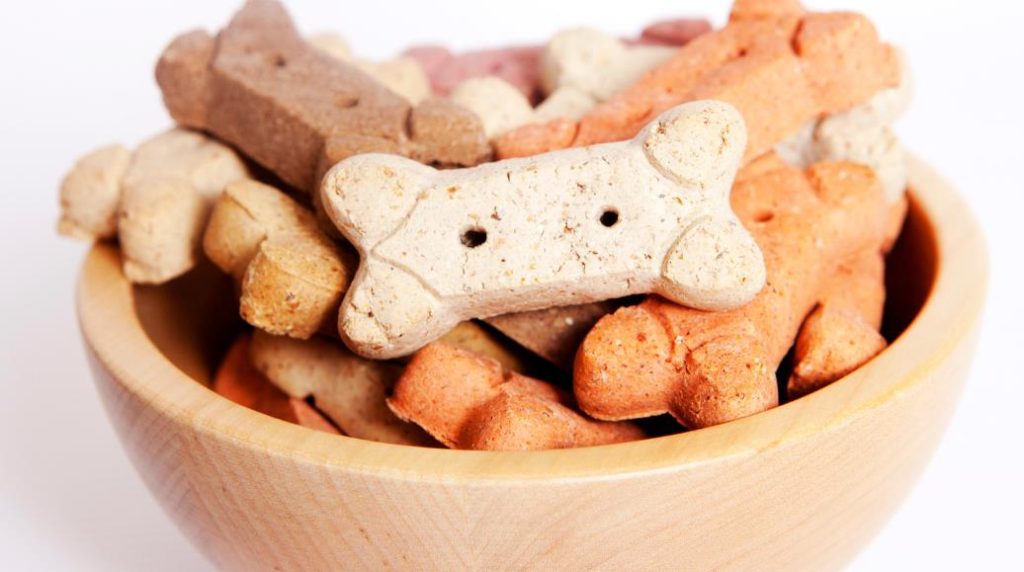A Complete Guide to Choosing the Best and Healthy Dog Treats

Have you ever gotten a “no” when offering your dog a treat at any time of day? Dogs are constantly on the lookout for treats. They enjoy eating treats, and they deserve them for good behaviour, such as listening to your commands, having their nails trimmed, and having their ears cleaned without fuss. Healthy dog treats have numerous health benefits, such as tartar or plaque removal from the teeth, weight maintenance, and gut health.
Only 10% of your dog’s daily calories must come from treats, as per Pets WebMD. So why not concentrate on providing them with the appropriate treats? You should also remember that treats must never be used in place of a complete meal for your pet. Too many treats, particularly unhealthy ones, can result in obesity, which can cause other health problems. Shop dog treats that are healthy and premium to ensure that they have no negative impact on your dog’s health, and feed in moderate doses.
Besides, there are numerous dog treats on the market, but not all of them are of high quality. As a result, it is critical for pet parents to take a proactive strategy to protect their dog’s health by learning about the various good dog treats available, the amount to be given on a regular basis, and safe storage.
Selecting Healthy Dog Treats
Because food is love, and we love our pets, healthy dog treats are frequently at the top of several owners’ grocery lists! Many of us use treats to demonstrate to our dogs how much we adore them, but they also serve as excellent prizes during positive reinforcement teaching and serve as a big distraction when we have to keep our dogs engaged. But, with so many choices available in every animal store and online shop, how do you know which dog treats are the finest for your dog?
Low-Calorie Treats
These are possibly the healthiest treats for your dog, and the best part is that they come straight from your own fridge. Vegetables and fruits are a great low-calorie food that is high in vital nutrients. Even though they don’t look or smell like typical dog chews, many dogs enjoy them nearly as much as those crunchy bone-shaped snacks. As a treat, give your dog pieces of sweet potato, carrots, or frozen berries.
Not only are these snacks nutritious, but your dog can eat more of them for the same amount of calories as traditional commercial dog treats. Home-cooked, fresh meat or bits of cheese can also make excellent high-value treats, especially when training for more challenging tasks, but these are higher in calories and must be given with caution.
Jerky Treats
Many dogs enjoy jerky-style treats because they are highly digestible. Nevertheless, the US Food and Drug Administration (FDA) has been trying to track reports of dogs becoming ill after eating jerky dog treats in recent years. The large majority of cases have been connected to Chinese-made chicken jerky treats and products, but other variants and sources have also been involved.
To date, the organisation has been unable to pinpoint the source of illness in dogs who have consumed these treats. If you do choose to give your dog jerky treats, you should look for products produced locally out of caution.
Freeze-Dried Treats
Numerous dog owners prefer freeze-dried dog chews since they are shelf-stable, portable, easily divided into pieces, and highly appetising to many dogs. Numerous freeze-dried treats are also created from a single ingredient, including fresh beef liver or chicken, making them an excellent choice for dogs suffering from food sensitivities like allergies or digestive problems.
Even so, because the freeze-drying procedure does not destroy most bacterial contaminants, countless freeze-dried treats are crafted from raw meat, which imposes a high risk of bacterial contamination. If you must use freeze-dried treats, look for ones that have been cooked before freeze-drying to reduce the risk of bacterial leakage.
What to Look for on the Label of Your Dog Treat Package?
When you shop dog treats, keep the following in mind:
Source
There are many dog treat brands that note ‘natural,’ but the ingredients source is not mentioned. Even so, it’s always a great idea to know where the ingredients in the treats you’re giving your dog come from.
Quantity
The quantity of ingredients used to make a dog treat is unimportant if they are all of high-quality and offer additional health benefits. Even so, most commercial treats on the market today contain a lot of undesired fillers, preservatives, synthetic colours, and artificial flavouring, which can be harmful to your dog’s health.
As a result, the fewer the ingredients, the higher the quality of the treat. Aside from that, single-ingredient treats are the best choice for dogs who have sensitive stomachs or are prone to allergic reactions.
Quality
Even if the ingredients in your selected dog treat are natural, this does not guarantee that it is safe to feed your dog onions, chocolates, raisins, and other foods, for example, can be harmful to them and must be avoided. Before selecting a dog treat, conduct extensive research and be aware of what must be fed to your furry buddies.
Also, before making a purchase, check the label for the calorie and fat content. Treats should not be the cause of any health problems in your dogs.





